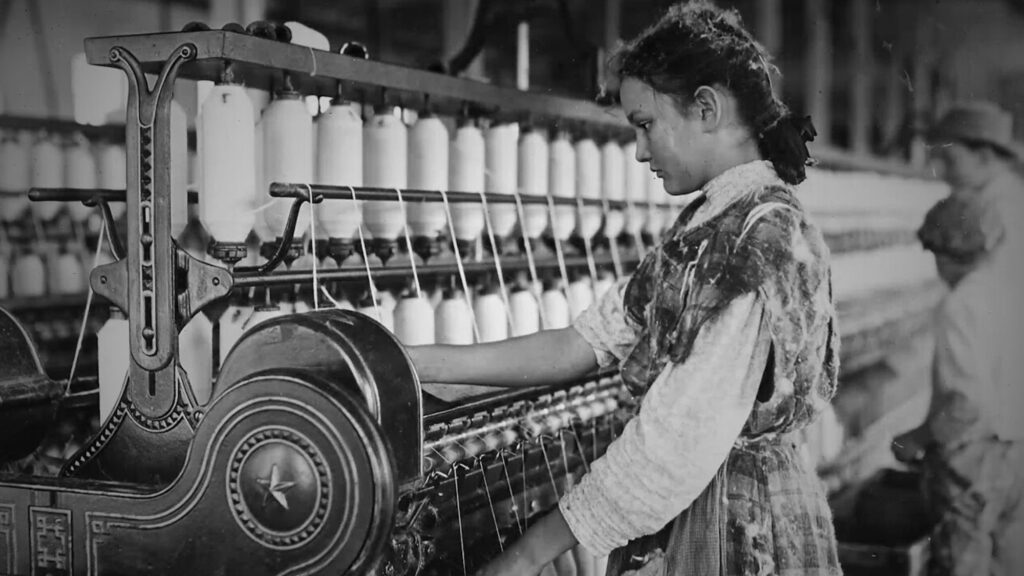What are the Most Important Textile Inventions?

There have been alot of textile inventions. Including spinning wheel and so. The spinning wheel, an implement with which many threads can quickly and easily be prepared. As yarn or fabrics made of natural fibers such as wool or flax. It brought in rapid changes and improved the fabric-making system immensely. The spinning wheel, a typical Asian invention (circa 1000 AD), became the substitute for the earlier laborious. And time-consuming methods of spinning (eg. roller spinning).
With the help of new technology, decreasing the amount of effort required to twist fibers into a yarn with a spinning wheel led to an increase in textile production. As a result, products which required fabric as raw material flourished, expanding the trend to clothing. And many other fabric-based items. Its use of cotton fabric by civilizations of all backgrounds increased the importance of the textile inventions in the industry in many parts of the world and had a direct role in the development. And the way our communities function. T & A textiles fabric wholesalers have the most incredible textile from different spinning.
Flying Shuttle:
The development of the flying shuttle, an invention which occurred in 1733 and was attributed to John Kay. Improved the weaving process greatly by accelerating the tempo of looms. We didn’t have any mechanization to improve the weaving activity before it was invented. Then, the weavers could produce only limited width of the fabric they could manufacture. This new device was capable of doing the hurling of the shuttle back and forth. Hence they made the weaving of the cloths more wide and quicker. These textile inventions doubled in part the productivity and efficiency of textile production. The tables were turned and textile factories expanded followed by mass fabric productions.
Cotton Gin:
The invention of cotton gin by Eli Whitney in 1793 led the cotton sector to get automatic. Which helps to eradicate the painstaking process of fibers separation from their seeds. Locally, before the invention of the cotton gin, the existing human labour had lasted forever and was really time consuming. So that it had limited the production of cotton. The application of the cotton gin machine allowed workers to speed up the whole process of cotton manufacturing several times. Moving it over to the mechanization era, with the ability to produce great tonnage of cotton fibers in a super short period of time.
Sewing Machine:
The invention of the sewing machine in the early 19th century, attributed to various inventors. Such as Elias Howe, Isaac Singer, and others, revolutionized garment production by automating the process of stitching fabrics together. Prior to the sewing machine, garments were primarily hand-sewn. A laborious and time-consuming task that limited the scale and efficiency of clothing manufacturing. The sewing machine mechanized stitching. Enabling faster and more precise seam work. These textile inventions accelerated the production of clothing. Making it more affordable and accessible to a broader population.
Synthetic Fibers:
Synthetic fibers, such as nylon, polyester, and acrylic, revolutionized textile inventions. Manufactured by providing alternative materials to traditional natural fibers like cotton, wool, and silk. Developed in the early to mid-20th century, synthetic fibers offered a range of advantages. Including durability, resistance to wrinkles and shrinkage, and versatility in texture and appearance. These fibers are created through chemical processes using raw materials derived from petroleum-based substances or natural sources like wood pulp.
Rotary Printing Press:
The rotary printing press, developed in the late 18th and early 19th centuries. Revolutionized fabric printing by enabling mass production of patterned textiles. Prior to the rotary press, fabric printing was done manually using wooden blocks or other labor-intensive methods. Limiting the scale and intricacy of printed designs. The rotary press introduced a mechanized system for printing continuous patterns onto fabric, allowing for faster and more precise printing on a larger scale. These textile inventions democratized access to printed fabrics. Making them more affordable and widely available.
Computerized Knitting Machines:

Computerized knitting machines, developed in the late 20th century and continuing to evolve with advances in textile inventions. Revolutionized the production of knitwear by automating the knitting process and enabling greater design flexibility and customization. Traditional knitting machines require manual operation and were not enough in their ability to create complex patterns and designs. Computerized knitting machines, equipped with sophisticated software and electronic controls. Allow for precise control over stitch formation, tension, and patterning. Resulting in highly detailed and intricate knitwear.
Conclusion – Most Important Textile Inventions:
These machines have streamlined the production process, reducing labor costs and production time while increasing output and quality consistency. Computerized knitting machines have opened up new possibilities for knitwear design and customization. Driving textile inventions in the fashion industry and expanding the market for knitted textiles.
Read Also: Tips to Find a Reputable Wholesale Fabric Supplier

